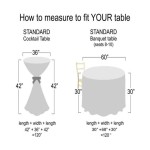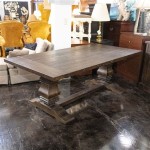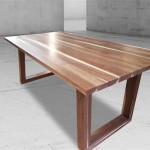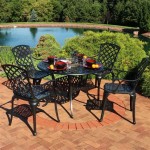DIY Butcher Block Table: A Comprehensive Guide
Crafting a custom butcher block table is a rewarding DIY project that adds both functionality and warmth to your kitchen or workspace. With its sturdy construction and timeless appeal, a butcher block table can serve as a culinary centerpiece for years to come. Here's a comprehensive guide to help you create your own DIY butcher block table.
Materials and Tools Required
To assemble your butcher block table, you'll need the following materials and tools:
- Butcher block (available in various woods and sizes)
- Table legs (metal, wood, or adjustable)
- Wood screws
- Drill or driver
- Wood filler
- Sandpaper
- Mineral oil or butcher block conditioner
Choosing the Butcher Block
The butcher block is the centerpiece of your table. Consider the following factors when selecting one:
- Wood type: Common choices include maple, oak, and walnut. Each type offers unique characteristics and durability.
- Thickness: Standard butcher blocks range from 1.5 to 2.5 inches thick, providing stability and durability.
- Grain pattern: Edge grain, end grain, and face grain butcher blocks each have distinct appearance and durability.
- Size: Choose a butcher block that fits your desired table dimensions.
Selecting Table Legs
Table legs provide support and style to your table. Options include:
- Metal: Durable, modern, and available in various finishes.
- Wood: Matching or contrasting wood species add warmth and character.
- Adjustable: Allows you to customize the table height for various uses.
Assembly Instructions
Once you have your materials, follow these assembly steps:
- Attach the legs: Secure the table legs to the butcher block using wood screws. Ensure they are evenly spaced and perpendicular to the surface.
- Fill and sand imperfections: Use wood filler to fill any gaps or imperfections on the butcher block. Sand the surface smooth.
- Apply finish: Apply multiple coats of mineral oil or butcher block conditioner to protect and enhance the wood's appearance.
- Clean regularly: Wipe down the surface with a damp cloth after each use.
- Avoid harsh chemicals: Use mild cleaners and avoid bleach or abrasive materials.
- Periodically oil: Reapply mineral oil or butcher block conditioner every few months to protect the wood.
Maintenance and Care
To maintain your butcher block table, follow these tips:
By following these steps, you can create a stunning and functional DIY butcher block table that will elevate your kitchen or workspace for years to come.

How To Make A Butcher Block Table Simplified Building

How To Make A Butcher Block Table Simplified Building

How To Make A Butcher Block Table Simplified Building

How To Build A Butcher Block Table Out Of 2x4

How To Build A Butcher Block Table Out Of 2x4

Diy Butcher Block Patio Table Ultimate Instructions By Cam Harris Art

30 Minutes To Make This Diy Butcher Block Table With Hairpin Legs Hometalk

How To Build Your Own Butcher Block Addicted 2 Diy

Butcher Block Hardwood Table 5 Steps With S Instructables

Diy Butcher Block Table Prototype Farmhouse 1820








